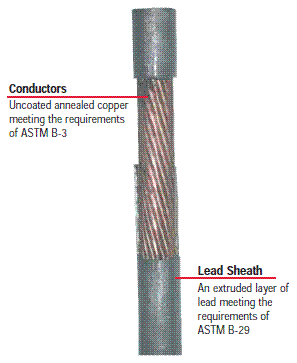- This topic has 1 reply, 1 voice, and was last updated 2 years, 11 months ago by .
-
Topic
-
I urgently need the main earthing conductor sizing calculation of 132kV substation
Hi,
I urgently need the main earthing conductor sizing calculation of 132kV substationFormula : I x {(TCAP x 10⁻⁴/tc ar rr) x ln <(Ko+Tm)/(Ko+Ta)}>⁻½
Fault current is 40kA in 3 sec.
I need this calculation for lead sheathed copper conductor. I donot know the values of lead sheathed copper conductor.
If anybody can help me, kindly send me an email to asifhammad@gmail.com
Thanks & Best Regards
Asif
Viewing 1 replies (of 1 total)
Viewing 1 replies (of 1 total)
- You must be logged in to reply to this topic.

 Also about mentioned fault duration (3 sec.), Relay malfunctions can result in fault duration in excess of primary clearing times. The backup clearing time is usually adequate for sizing the conductor. For smaller substations, this may approach 3 s or longer. However, because large substations usually have complex or redundant protection schemes, the fault will generally be cleared in 1 s or less. Meanwhile for correct formula and table you can refer to IEEE 80 or following relations.
Also about mentioned fault duration (3 sec.), Relay malfunctions can result in fault duration in excess of primary clearing times. The backup clearing time is usually adequate for sizing the conductor. For smaller substations, this may approach 3 s or longer. However, because large substations usually have complex or redundant protection schemes, the fault will generally be cleared in 1 s or less. Meanwhile for correct formula and table you can refer to IEEE 80 or following relations. 
